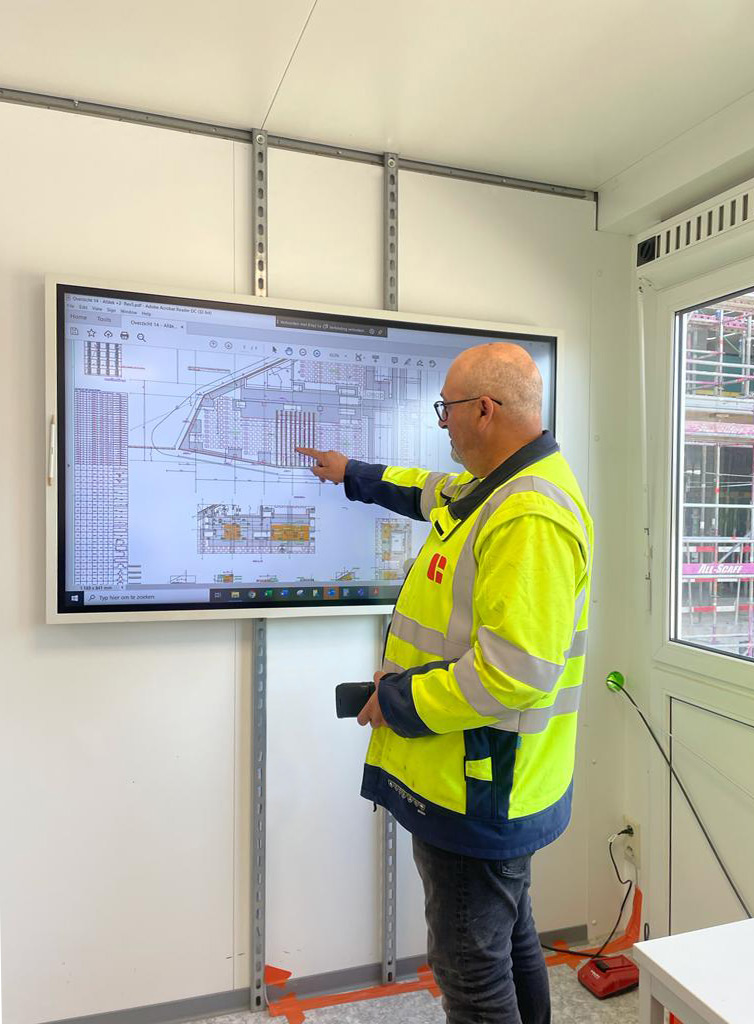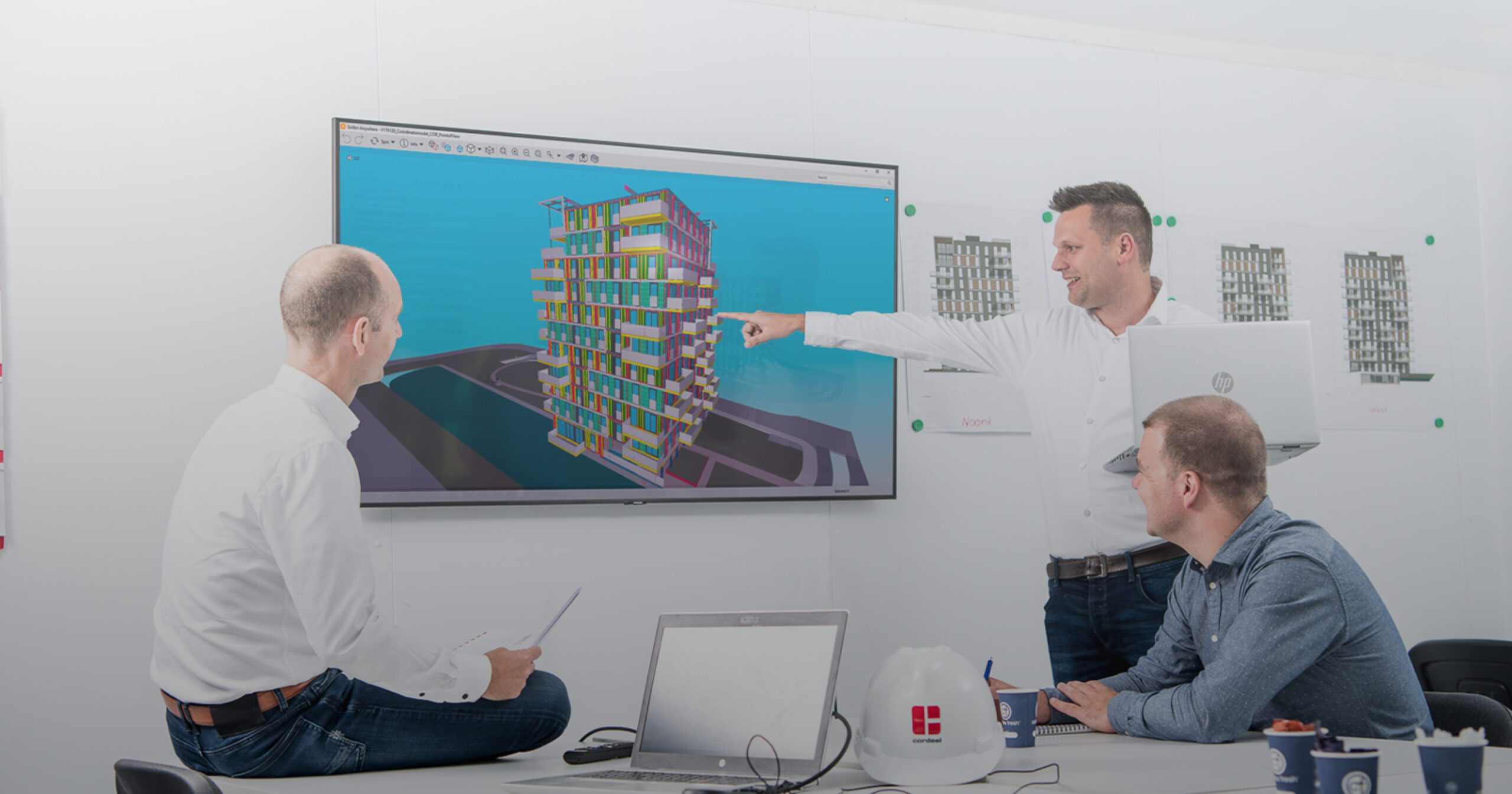Digital Construction

BIM
BIM (Building Information Model) is an essential component of the digital transformation we (and our sector) are going through. The main objective of a BIM process is to enhance collaboration by setting up a central platform that serves as a single source of truth/information. Working with BIM has many advantages:
- It is the perfect foundation for material passports, with info on amongst others recyclability and circularity;
- It can help to set up predictive maintenance schemes, improving material and building longevity.
Our digital transformation focuses on creating data and data flows rather than individual drawings, documents and models. This prepares our organisation for the future.
The first step we are taking towards standardisation and uniformity is setting up a central platform, where all project-related information will be stored together.
To facilitate this, the construction site is equipped with a smart board, eliminating the need for printed plans during meetings with constructors. This is not only good for the environment but also convenient for planning changes. In 2023 we rolled-out these screens on construction sites of our construction companies in Belgium and Cordeel Nederland.

HP SitePrint robotic printer
From BIM models, we already have the capability to level elements. Another additional technique is the ability to print the plans we digitally generate from the BIM model onto the concrete floors of our construction sites. The focus here is on positioning interior walls, installation openings, QHSE safety zones, and clear passageways.
To gain experience with this, we tested the technology in collaboration with HP and Leica Geosystems, part of Hexagon. They provided us with a SitePrint Robotic printer to print our plans on the concrete floors of two of our construction sites.
We concluded that it is particularly useful for interior finishing work and will closely follow the evolution of this technology to determine the best use-cases for us.


Additional digital construction initiatives
Precast request tool
For efficient coordination of prefabricated elements we developed a precast request tool. It is replacing traditional methods of follow-up and ordering via excel sheets, email and phone calls.
With this tool, it has become possible for site managers/project leaders to directly view the planning and deliveries of C-concrete for their own project. For example, you can check the status of each element and whether a delivery is currently on its way.
Moreover, you have the option to schedule a delivery for each element at a different time, directly from the tool.
Augmented reality
On several construction sites we’re using the AR techology of Trimble which is another exciting way to enhance our digital construction skills. Using a tablet, we project the BIM model onto the floor, ensuring accurate placement of pipes or identifying where concrete pouring is required.
The use-case is visually envisioning the appearance of the future building, followed by error checking by overlaying the BIM model on the site layout.
Augmented reality by Trimble
We apply this technology on several construction sites to improve on quality and efficiency.
360° photography powered by Openspace
In 2023 we introduced 360-degree photography on construction sites with the tool Openspace.
On our pilot project”3 Eiken” in Wilrijk we document weekly the progress of the construction works. Cameras mounted on helmets are used for continuous photo capture while walking through the building.
The footage can be linked to the floor plan or the BIM model of the project, enabling visual documentation and assessment of progress, safety, and defects. You can also project the footage and the BIM model side-by-side to detect possible deviations.
Thanks to the continuous documentation, we can monitor the works that happened weeks or months ago.
Another advantage is the reduced need to visit the site, as the access to the platform can be shared easily with interested stakeholders. This allows them to “walk” through the building, compared to street-view.
We plan to implement this technology to more projects, especially to all more complex projects and renovations.

